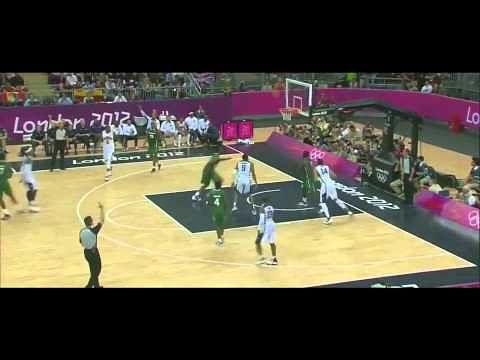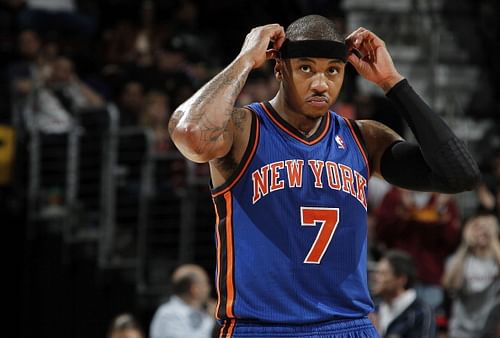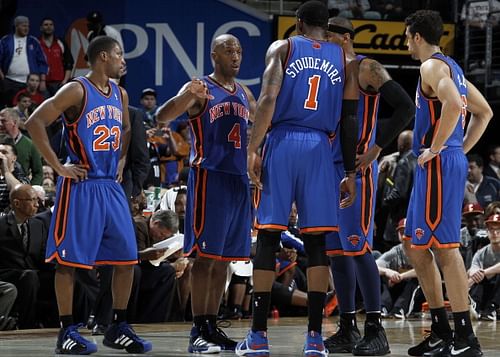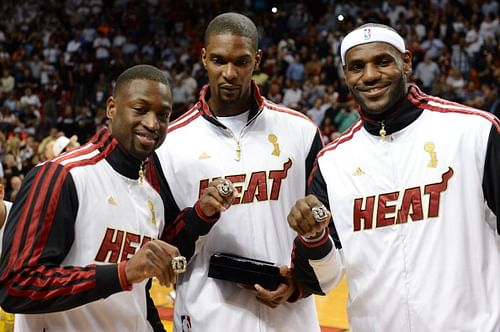
Carmelo Anthony – the New York Knicks’ incarnation of Jekyll and Hyde
To say that the New York Knicks mortgaged their immediate and foreseeable future while attempting to land Carmelo Anthony in the winter of 2011 would be an understatement. The trade seemed so lopsided that it was evident to the basketball universe that the intrusive hand of James Dolan had again interfered in the basketball decisions of the franchise.
The Knicks were coming in on the back of a mixed off-season in 2010 as their mission to land “Flight LeBron James” had failed to take off. Brushing off their failure to land “the King”, they turned their attention towards courting another All-Star in the form of Amar’e Stoudemire, enticing him from the Phoenix Suns with a lucrative five-year, $100 million contract.
With the expertise of Donnie Walsh at the helm, New York supplemented the presence of Amar’e Stoudemire with their core of young talents. Mike D’Antoni’s run-and-gun offense was proving to be a handful for opposing teams as Danilo Gallinari, Raymond Felton, Wilson Chandler and Landry Fields led the Knicks into the All-Star weekend with a winning record, a feat that they had managed for the first time since the year 2000.

Carmelo Anthony
Yet they continued to actively pursue Carmelo Anthony, for reasons best known to them. They already possessed a superstar whose game revolved around a lot of sets of isolation, jumpshots near the key and total disregard for defense. But here they were making a pitch to another superstar whose game perfectly mirrored that of Stoudemire; the fact that both players had tasted meagre success in the postseason was another facet of the resemblance between the two.
For Melo though, the reasons were more direct. Having spent seven and a half years in Denver, Melo yearned to return to New York, back to the neighbourhood of Brooklyn where he first learnt the game of basketball, wanting to end his career where it all began. He managed to pull his weight and finally got what he wanted. Meanwhile, Denver gleefully accepted all the assets that the Knicks were willing to part with, Masai Ujiri more than happy to receive a handful of players around whom he could build a franchise, a team for the future.
But the path would not be laden with roses as the Knicks failed to find any chemistry between their two superstars, with injuries definitely not helping their cause. Making their first playoff appearance since 2004, they made an early exit, bowing out at the hands of the Boston Celtics after failing to win a single game in the series. Injuries to Billups and Stoudemire during the playoffs didn’t help the Knicks’ chances of advancing to the conference semifinals.

Chauncey Billups #4 of the New York Knicks talks to Toney Douglas #23, Amar’e Stoudemire #1 and Landry Fields #6 while playing the Cleveland Cavaliers on February 25, 2011
The next off-season witnessed the Knicks amnestying Chauncey Billups and acquiring Tyson Chandler, who was fresh from winning a title with the Dallas Mavericks. But what Knicks fans failed to realize was that the core of the team still remained the same, with two of the NBA’s most potent isolation players in the roster. While last year’s 54-win season was a pleasant surprise for the NYC fans, the team has flattered to deceive this season and is on course for an early off-season and heading towards the lottery.
Carmelo Anthony has been one of the most polarizing players in NBA history. While his fans gape in awe at his scoring ability and his versatility on the offensive end, his naysayers guffaw at his inability to defend consistently and make the right pass at the right time, and his constant failure to elevate his team-mates to a higher level, especially during playoff time.
The recent past reveals that superstars cannot single-handedly win championships; the supporting cast has an integral role in paving the way for lifting the Larry O’Brien trophy. Michael Jordan could not have won six championships without the services of Scottie Pippen, Dennis Rodman and Steve Kerr. Kobe Bryant could not have achieved the three-peat in the absence of Shaquille O’Neal.
This would perfectly justify why LeBron James decided that enough was enough and headed to South Beach to join hands with two of his cohorts in search of the elusive ring. And since James landed in Miami in the summer of 2010, the Heat have vindicated his decision, reaching the summit clash every post-season, winning two of three NBA Finals, and they are now on the brink of a three-peat.

Dwyane Wade #3, Chris Bosh #1 and LeBron James #6 of the Miami Heat pose with their 2012 NBA Championship rings
While there is no doubt that Melo is one of the best (if not the best) offensive players in the league, there have always been doubts over his leadership qualities, his ability to carry the team on his shoulders. He has never been a willing passer during his time in the NBA, his assists hovering around 3 per game for his career. His ball-stopping tendencies have resulted in a stagnant offence, helping opposite teams to get their defensive shape set up. And more often than not, when the ball is in Melo’s hands, the possession ends up in a wasted shot clock and a desperate last-ditch heave.
Contrast his play in the NBA to his three stints at the Olympics and you have a perplexing situation. Whenever he dons the blue-and-whites of USA, Melo’s metamorphosis into an all-round player is astounding and at the same time, puzzling.
Melo not only scores, but is also willing to do whatever it takes to win – passing, rebounding or playing defence. He trusts his team-mates to the fullest extent, and why not, when you’re surrounded by the likes of LeBron James, Kobe Bryant and Kevin Durant, coupled with the fact that you’re playing against sub-par opposition.

Carmelo Anthony #15 of the United States salutes at the 2008 Beijing Olympic Games
Melo’s teammates acknowledged the impact of his leadership of the “Redeem Team” during the 2008 Olympics. Despite Jason Kidd and Kobe Bryant being on the team, Melo was accepted as a leader and he led the USA team to Olympic gold. Melo personally avowed the impact that the Olympics had on his NBA season as he led his team the Denver Nuggets to the Western Conference Finals.
His efficiency during the last Olympics was staggering. Melo averaged an eye-popping 16.3 points, 4.8 rebounds and 1.3 assists per game despite being on the floor for only 17.8 minutes. The icing on the cake was the 37-point performance against Nigeria in which he set a record for most three pointers made and attempted (10 and 12 respectively).
http://youtu.be/OxqQX2Do6Bw
All the caveats aside, why hasn’t Melo been able to replicate the leadership role that he essayed with the national team, on the Madison Square Garden floor? Surely Melo must realize that he cannot play with a Durant, James, Wade or a Bryant night in night out. Surely Melo must learn to trust his team-mates more often than he is currently doing and should realize that the onus is on him to be the leader at this stage of his career.
Knicks fans did not realize the contribution that veterans Jason Kidd and Rasheed Wallace had on last year’s team until the leadership void was felt this season, with the Knicks’ off-court problems dominating the headlines, capped by J.R. Smith’s drug suspension and Raymond Felton’s arraignment for possession of weapons. Kidd and Wallace were the glue of the team, as the duo held everything together, making Mike Woodson’s job at the helm easier.
As this season’s free agency approaches, Melo must be aware that with age catching up to him, his time as an elite athlete is dwindling. He should realize that for him to wear that elusive accessory on his ring finger, he has to assume a more proactive role as the leader of his team, distancing himself from being a peripheral figure during timeouts, and remembering to trust his teammates more.
P.S.: This article comes from an ardent but frustrated Melo fan.